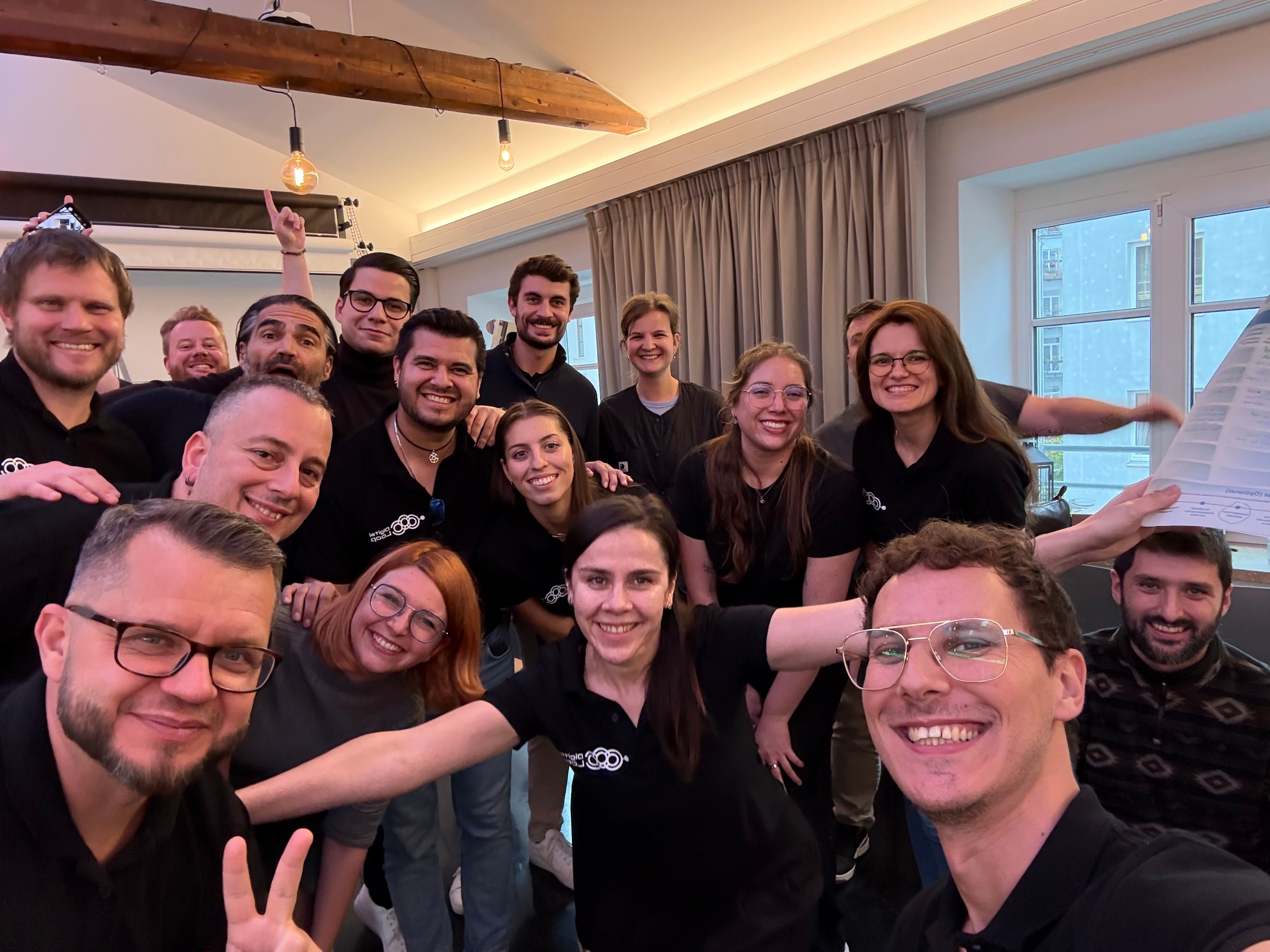More Than Just Moving a Site – A Strategic Content Transition
When we talk about site migration, it’s easy to picture it as simply “moving” a website from one system or platform to another—perhaps changing domains, updating the CMS, or shifting to a new server environment. But in my experience, migration can be far more than a technical relocation. Sometimes, it’s a strategic decision shaped by a combination of business needs, technical goals, and growth opportunities.
In this case, that’s exactly what happened - and it quickly became a complex situation. The client, a well-known industry leader (let’s call them Company A), had purchased two key products from Company B. However, Company B is actually owned by a larger parent company, Company C. These two products weren’t just any offerings; they were among the main drivers of traffic for both Company B and Company C’s websites.
Thus, here are the reasons why it becomes increasingly complex:
- It is a partial migration.
- As the two products are major traffic contributors, traffic loss can’t be avoided. However, there are measures that could minimize that loss.
- Company A already has these exact two products, with quite different specifications (and obviously, ToV). Therefore, it is also a matter of merging those products and reintroducing them on company A’s website.
- This means that the products from company B will be integrated and rebranded into company A’s.
- Only two high-impact products are being migrated. These products are among the main drivers of traffic for both brands, so any disruption carries substantial risk.
Feeling a bit overwhelmed? That’s understandable - this scenario has a certain complexity. To clarify things, let’s step back and look at who Company A and Company B are. By understanding their backgrounds and differences, we’ll get a clearer picture of the nuances involved in this migration case.
Setting the Stage: Understanding the Players and How to Position Yourself
As we are giving strategic advice for company B, we should try to put ourselves in their shoes. Understanding their positioning first becomes the key. While we need to keep company names confidential, both organizations are leading names in their respective industry - each with a very different approach to their digital products. For confidentiality reasons, we’ll refer to the organizations as Company A and Company B. Both are recognized leaders in their field, but they approach their product portfolios and customer experience very differently.
Company A
Company A organizes its product offerings in a classic, category-driven way. They have this “we have a great product, here is what we offer” kind of vibe as their tone of voice. Their website is structured around clear, well-defined product types, focusing on providing comprehensive information and easy side-by-side comparison. This approach emphasizes transparency, making it straightforward for users to understand options and make informed decisions.
Company B
Company B, by contrast, places personalization and flexibility at the center of its digital strategy. Their product is designed to adapt to individual customer needs. The user journey is focused on the user’s needs, with content and CTA that highlight how customers can benefit from combining different solutions. This is clearly reflected in their product variety and their tone of voice, which is “we will accommodate your needs and adjust our products accordingly.” This approach has yielded high user engagement and fostered strong brand loyalty.
In hindsight, it’s not just the different brand philosophies that make it challenging. It’s also the difference in user experience. The next question is then how we first consolidate such different products, and next, how to reintroduce them to the users/customers.
Company C
Basically was the main group that owned company B and still owns the rest of the product varieties that were not sold to company A.
Why This Migration is Especially Nuanced
This migration is far from a standard site move. Instead, it is a partial migration involving a select set of high-value products that are key sources of traffic for both Company A and Company B. This means, unlike traditional migration where the requirements are mostly based on technical perspective (including the SEO measures) this migration is also a rebranding effort of the two products from company B (which was a part of company C’s) into company A. Meaning you also have to consolidate these two products/services under the flag of company A.
Assessing What it Takes to Migrate and Rebrand at Once
Before making any technical changes, I started with a deep dive analysis of both brands’ existing digital performance:
- Identifying the Most Valuable Pages: I have mapped which product pages on Company B’s site contributed the highest share of traffic and ranked for the most important non-brand and branded keywords.
- Understanding Keyword Overlap & Gaps: I analyzed where Company A and Company B already compete for similar keywords, and where unique opportunities existed to consolidate and strengthen rankings for both brands.
- Evaluating User Intent & Customer Journey: Company B’s focus on bundles and customers’ needs meant their landing pages might capture a broader variety of queries, while Company A’s structure favored clarity and comparison. They are straightforward: “We have great products for you, here is what we offer.” This influenced the approach I use for composing the strategy for content integration.
- Merge or differentiate: Consider whether the best approach is to completely merge the products or create a product differentiation in order to allow better retention of company B’s customers. This also enables better transition to the merging and transitioning customers from company B & C’s sites to company A’s.
With so many moving parts and uncertainties, Company B approached us not for a checklist, but for a true strategic workshop—to map out options, understand the risks, and develop an actionable migration plan. They needed help, a walkthrough of options and possibilities while minimizing risk. So this is what we will be doing today. Here’s how I structured the process, blending SEO best practices with business realities.
Step 1: Laying the Foundation—Analysis & Discovery
We began by meeting with the main stakeholders to clarify the business goals, the planned timeline, and any non-negotiable technical or brand constraints. Since Company B was unsure which path to take, our first mission was to create clarity through data.
- Traffic & Value Mapping: We pulled analytics from both brands, drilling into traffic sources, top-performing pages, and keyword rankings. This allowed us to identify which pages and product areas were true “must-saves” for the migration, and which could be consolidated or retired.
- Keyword & SERP Landscape Audit: Using tools like SEMrush and Similarweb, we compared how both brands performed for high-value search terms. This highlighted where keywords overlapped, where there was cannibalization, and where Company B had a competitive advantage—information critical for setting SEO priorities.
- Product mapping: The products from both companies were laid out, and the USPs were highlighted. The stakeholders decided to keep the products differentiated. The key here was how to make the products focused on different areas: online and offline. The SEO focus is to create different types of authority on the products and avoid cannibalization.
Step 2: Exploring Migration Scenarios Together
In the workshop, we openly discussed every possible migration pathway, focusing on both SEO and business impact.
Scenario A: The Ideal SEO Solution
If the group company permitted 301 redirects from Company B’s legacy pages to the new product pages on Company A’s site, this would provide the cleanest and most SEO-friendly migration scenario. In the workshop, we guided both teams through the specific steps and their benefits:
- Prioritizing High-Value Pages: We started by identifying the most important pages—those with the highest rankings, strongest backlink profiles, and greatest traffic value. These became the first targets for migration and redirection.
- Implementing 301 Redirects: For each prioritized page, we planned to set up a direct 301 redirect from the legacy Company B URL to the corresponding page on Company A. This tells search engines that the content has permanently moved, ensuring that authority, rankings, and referral traffic are seamlessly transferred.
- Consolidating Link Equity: Alongside the technical redirects, we outlined a process to contact key external partners and websites that link to the legacy pages, requesting them to update their links to the new Company A URLs. This consolidates authority and accelerates the migration’s positive impact. This counts both for internal and external links.
- On-Site User Experience: To avoid disorienting existing users, we recommended banners and explanatory messages on the old pages and across key touchpoints, guiding visitors smoothly to the new locations and reinforcing the rebranding narrative. For this, branding messages are necessary support.
- Monitoring and Adjustment: After implementation, we stressed the importance of monitoring with Google Analytics and Search Console—tracking traffic, indexation, and any dips in rankings, and quickly troubleshooting issues such as 404 errors or misdirected traffic.
This scenario offers the best chance to preserve existing rankings and traffic, accelerate user adoption, and establish Company A’s authority in the eyes of both customers and search engines. But what happens when a redirect is not allowed? We created a “collapsing checklist” which means if one item has to be crossed out due to political disagreement, then there are items in the list that will need to be underlined. So let’s say if a redirect is not allowed, then gradually migrating the most valuable pages and preserving the links would hold even more importance.
Step 3: Business-Driven Content Strategy & Relaunch Planning
We encouraged both companies to treat this as an opportunity for positive change - not just risk mitigation.
- Product Repositioning & Differentiation: Since Company A and B had different approaches, we facilitated a workshop on how to differentiate and underline the value propositions from both. The goal was not only to retain existing users, but to broaden appeal and support the rebranding story.
- Strategy Focus on “old” and “new” Products: Rather than quietly migrating pages, we advised Company A to relaunch the “new” products through their blog and resource center. By publishing feature articles, FAQs, and guides that introduced the rebranded offerings, Company A could build topical authority, capture long-tail queries, and guide both users and search engines to the new content. These posts could also serve as campaign landing pages, be integrated into newsletters, and be amplified via social and paid channels. In short, while “new” products focus more on product values highlight and creating strategic placement for them within company A’s site - utilizing social media and company A’s blog to relaunch; for the “old” products the focus lies more on consolidating the content in the product pages, avoiding keyword cannibalization and make sure the products communicates equal levels of importance.
- Supporting Content for User Transition: We recommended banners, announcements through the blog, and dedicated FAQ pages to reassure users about the changes, explain where to find information, and address potential confusion.
Step 4: Continuous Monitoring & Iteration
No migration is perfect from day one, so we stressed the importance of ongoing analysis:
- Daily & Weekly Checks: Using Google Analytics and Search Console, monitor traffic and rankings on both legacy and new pages.
- User Feedback Loops: Collect feedback via on-site surveys or customer service channels to quickly spot confusion or pain points.
- Adaptation: Adjust internal linking, page structure, or content as needed based on what the data and feedback reveal.
Company B was very pleased with the strategy I composed for them, and they are confident that they can minimize traffic loss with these measures and resources they have. We still assist them with some product mapping along the way, the overall process seem to be going smoothly. Company B is aware that collaboration is a part of the key success, and they made sure that every important decision on one case involves all the necessary stakeholders.
Key Takeaway
By making the migration a collaborative, data-driven process—with scenario planning, business-case thinking, and a focus on communication—we were able to provide both companies with a clear path forward, regardless of technical or legal restrictions. The end result was a migration plan that minimized risk, maximized opportunity, and positioned Company A for sustainable growth.









